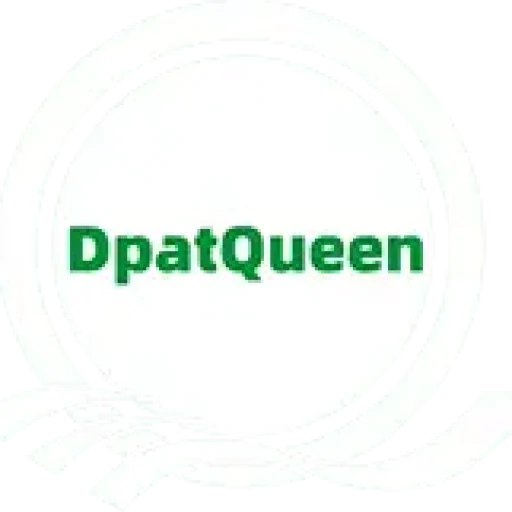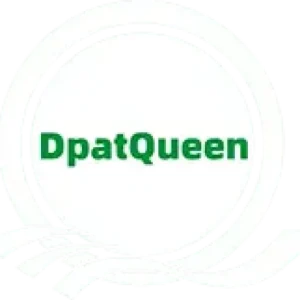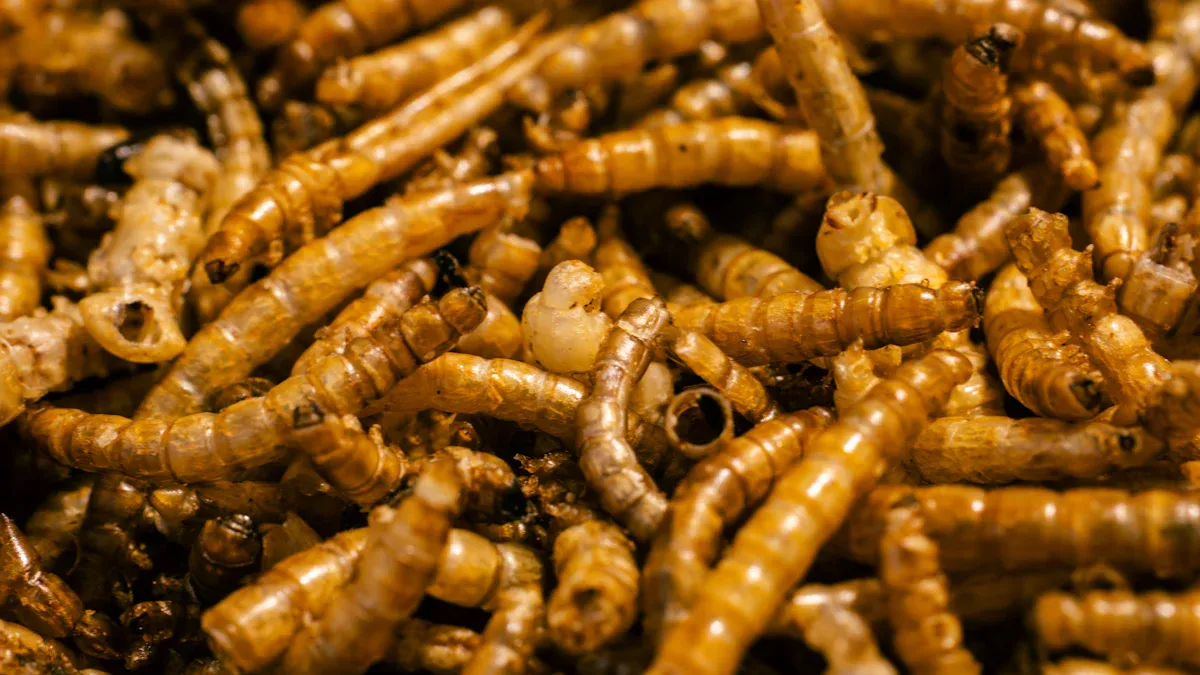
Circular farming is a big deal in Eastern Europe. It’s a way to cut waste and protect the environment. I’ve seen how dried insects, like mealworms, fit perfectly into this system. Did you know mealworms can contain up to 76% protein? They’re a sustainable, high-protein option for farming.
Key Takeaways
- Dried mealworms are a healthy protein source with 76% protein. They are a great option instead of regular animal feed.
- Using mealworms in farming helps cut waste and makes soil better. Their leftovers help recycle nutrients in the soil.
- Feeding animals with insects can save farmers money and supplies. Mealworms need less space and release fewer harmful gases than regular livestock.
Understanding Circular Farming and Its Importance
What is Circular Farming?
Circular farming is all about creating a system where nothing goes to waste. Instead of throwing away resources, farmers reuse and recycle them. For example, crop leftovers can become compost, and animal manure can enrich the soil. I like to think of it as giving nature a helping hand to keep everything in balance.
Experts define circular farming as an approach that reduces waste and recycles nutrients. One study even describes it as a system that replaces the “end-of-life” concept with reusing and recovering materials during production and consumption. This method not only protects the environment but also helps feed a growing population more efficiently.
| Definition | Source |
|---|---|
| Circular agriculture is an economic system that replaces the ‘end-of-life’ concept with reducing, reusing, recycling, and recovering materials in production, distribution, and consumption processes. | Kirchherr et al. (2017) |
| The premise of circular agriculture is to continuously circulate nutrients and materials, prevent losses and waste, and use natural resources more efficiently to feed a growing population. | Jurgilevich et al. (2016) |
| Achieving circular agriculture requires fundamental changes in practices, organizations, markets, and institutions. | Muscat et al. (2021) |
Why Circular Farming Matters in Eastern Europe
Eastern Europe faces unique challenges in agriculture. Many farmers here rely on traditional methods that often lead to waste and environmental harm. Circular farming offers a way to change that. It combines old and new techniques to make farming more sustainable.
I’ve read that circular farming can improve food production efficiency and tackle environmental problems caused by industrial farming. This is especially important in a region where food security is a growing concern. Did you know that in 2018, around 820 million people worldwide were undernourished? Sustainable farming methods, like circular farming, can help solve this issue by producing more food with fewer resources.
Key Challenges in Achieving Sustainability in the Region
Switching to circular farming isn’t easy. Farmers in Eastern Europe face several hurdles. Many don’t know much about circular practices or their benefits. I’ve noticed that limited awareness is a big problem. Social media could play a role in spreading the word, but it’s not enough.
Economic barriers also make things tough. High production costs and a lack of subsidies discourage farmers from adopting these methods. On top of that, many farmers don’t have access to advanced education or training. Did you know that 70% of farmers in the region only have primary or secondary education? Without proper support, it’s hard for them to make the switch.
Note: Governments and organizations need to step up. Better policies, subsidies, and education programs could make a huge difference in promoting circular farming.
The Role of Dried Insects in Circular Farming
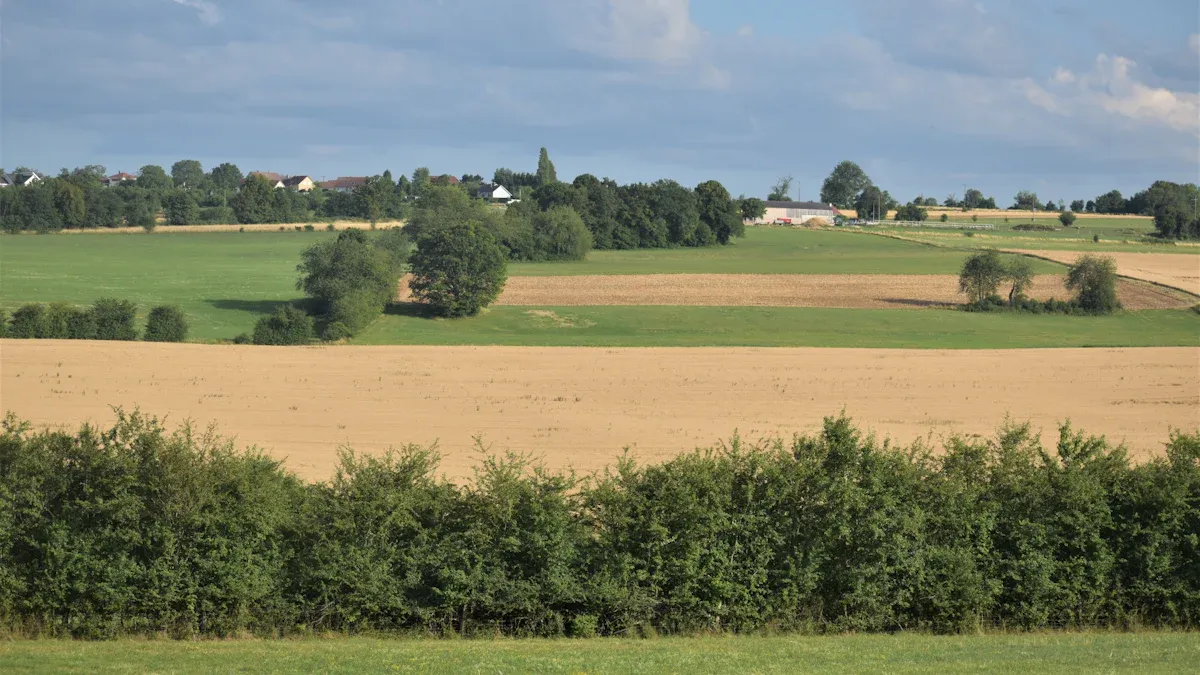
Waste Reduction Through Insect-Based Feed
I’ve always been amazed by how dried insects can help reduce waste. Did you know that insect farming could replace up to 50 million tonnes of feedstocks with insect protein? That’s a huge step toward cutting down agricultural waste. Mealworms, for example, can thrive on food by-products, like leftover vegetables or grains. This means they’re not just a source of protein but also a way to recycle materials that would otherwise go to waste.
Black soldier fly larvae are another superstar in this area. They can process biowaste efficiently, turning it into valuable feed. A study by Gold M. et al. (2020) even highlights how these larvae enhance waste reduction when used with biowaste formulations. It’s incredible to think about how these tiny creatures can make such a big impact on farming practices.
Nutrient Recycling and Soil Health Improvement
Dried insects play a key role in nutrient recycling. When farmers use insect-based feed, they’re essentially closing the loop in the agricultural cycle. For instance, mealworms can convert food waste into high-quality protein. This not only reduces waste but also ensures that nutrients are reused instead of being lost.
What’s more, the by-products from insect farming, like frass (insect manure), are excellent for soil health. They’re rich in nutrients and can improve soil fertility naturally. I’ve read that using frass as a fertilizer can reduce the need for chemical alternatives, which is better for the environment and the crops.
Cost Efficiency and Resource Optimization for Farmers
Switching to dried insects can save farmers money. Insect farming is more resource-efficient than traditional livestock farming. For example, mealworms require less land and emit fewer greenhouse gases. Their feed conversion rate of 3.8–5.8 is impressive, but black soldier fly larvae are even more efficient, with a rate of 1.4–2.6. This means farmers get more protein for less input.
Economic data also supports this. Facilities like Entobel in Vietnam produce insect protein at a cost of $2.7K per tonne, making it a cost-effective option for farmers. Compared to traditional feed sources, dried insects offer a sustainable and affordable alternative.
Tip: If you’re a farmer looking to cut costs and improve sustainability, consider incorporating dried insects into your feed strategy. It’s a win-win for your wallet and the planet.
Real-World Applications in Eastern Europe
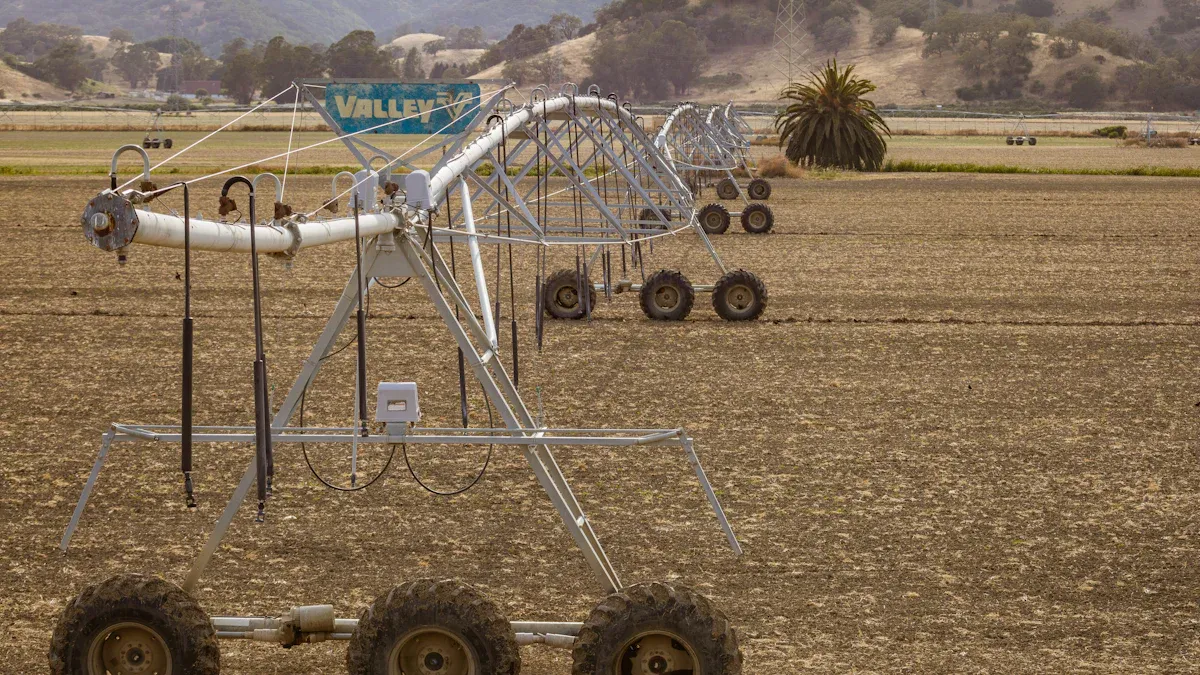
Case Study: A Farm in Poland Using Dried Mealworms for Feed
I recently came across a fascinating farm in Poland that’s using dried mealworms as feed. The results are impressive! The farm reported that mealworms, with a feed conversion rate (FCR) of 3.8–5.8, are as efficient as pigs (FCR of 3.1). What’s even better is that mealworm farming uses less land and produces fewer greenhouse gases compared to traditional livestock.
The nutritional value of mealworms is another game-changer. They contain about 17% protein and essential nutrients like iron, vitamin D, and zinc. This farm has seen healthier livestock and reduced feed costs by switching to mealworms. It’s inspiring to see how one small change can make such a big difference.
Regional Success Stories in Sustainable Farming
Poland isn’t the only country embracing dried insects. Across Eastern Europe, farmers are finding innovative ways to incorporate mealworms into their practices. For example:
- Romania: Farmers are using mealworm frass as a natural fertilizer, improving soil health without chemicals.
- Hungary: Aquaculture projects are testing mealworms in fish feed, with promising results for tilapia farming.
- Czech Republic: Small-scale farms are breeding mealworms to reduce food waste and create a local protein source.
These stories show how dried insects are transforming agriculture in the region. They’re not just a trend—they’re a sustainable solution.
Potential for Scaling These Practices Across the Region
Scaling mealworm farming in Eastern Europe is entirely possible. The process starts with breeding darkling beetles, which lay 5–8 eggs daily. With the right conditions—temperature, humidity, and feed—larvae grow quickly. By 2030, experts predict a production capacity of 221,000 tonnes of dried insects, including mealworms.
The EU’s approval of mealworms as a Novel Food also opens doors for expansion. Farmers can now market mealworms in various forms, from animal feed to human snacks. This creates opportunities for both small-scale and industrial farming. I believe this scalability could revolutionize agriculture in Eastern Europe, making it more sustainable and efficient.
Dried mealworms are truly a game-changer for circular farming in Eastern Europe. They’re efficient, sustainable, and packed with nutrients.
- Their feed conversion rate (FCR) of 3.8–5.8 outperforms traditional livestock like pigs.
- Mealworm farming uses less land and emits fewer greenhouse gases.
- Nutritionally, they offer 17% protein, plus iron, vitamin D, and zinc.
By adopting mealworms, farmers can reduce waste, save resources, and improve sustainability. It’s time to explore how these tiny insects can transform your farming practices. Let’s lead the way in sustainable agriculture together!
FAQ
What makes dried mealworms better than traditional livestock feed?
Dried mealworms are more efficient. They need less land, water, and resources. Plus, they’re packed with protein and nutrients, making them a sustainable choice for farmers.
Can mealworms really help reduce farming costs?
Absolutely! Mealworms grow fast and require fewer inputs. Farmers save money on feed and land while boosting sustainability. It’s a win-win for the environment and their wallets.
Are dried mealworms safe for animals?
Yes, they’re safe and nutritious. Mealworms are rich in protein, vitamins, and minerals. They’re even approved by the EU as a feed ingredient for livestock and aquaculture.
Tip: Start small! Test mealworms on a portion of your livestock to see the benefits firsthand.
